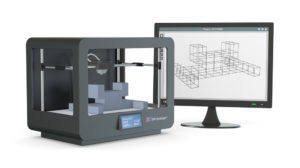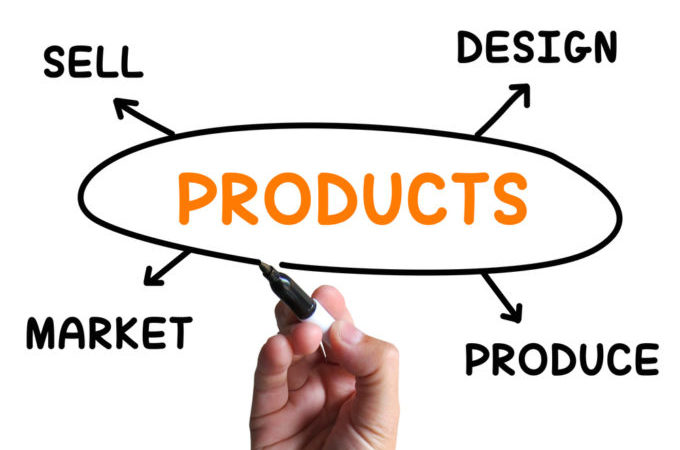When you have a new product idea that you’ve been mulling over for months or years — mentally designing it, tweaking concepts, playing with features and functions, and perfecting your vision — you’re ready to jump right into it when you make the entrepreneurial leap to making your product a reality. Working off all those built-up ideas — and passion — can be a big help in making your first product-development experience comparatively easy.
Yet what about your next product? Whether you’re an entrepreneur seeking to expand your business’s foothold, or a design engineer tasked with developing new concepts for your company, once the pressure to create is on, the well can seem to dry up surprisingly quickly. Even worse, the time that you put into generating a new product concept, prototyping it and then potentially producing it, can be a lost resource if your product doesn’t appeal to your target customers.
The key to effective and efficient new product creation is combining quality with speed. Here, we’ll discuss some ways to generate and identify the best product ideas, and test them quickly for appeal to your customers — thus limiting your resource expenditure on unsuccessful ideas while speeding your time to market for those that succeed.

1. Brainstorm smarter: Think about your last successful brainstorming session. Is it taking a while? If so, you might still be brainstorming “the old way.” Don’t worry — it’s the way most of us have been used to since the start of our careers, and maybe even earlier: gather a few people in a room and start tossing ideas. It even sounds downright noble on paper — no idea is too crazy, there are no wrong answers, and so on.
In reality, however, the system often breaks down. Personalities take over. Politics might, too. Participants can get too hung up on one or two ideas — whether that means developing them or picking them apart. In the midst of all that, the best ideas often get left by the wayside. Here are some ways that you can brainstorm smarter — and better:
• Lower the volume — a lot. Many successful organizations now begin their brainstorming sessions by having participants write, sketch or otherwise illustrate their ideas on paper. This lets everyone stay engaged, introvert or extrovert, and ensures that participants are able to more fully flesh out their ideas. This quiet time of creativity is much more likely to generate viable ideas than the raucous, unwieldly brainstorming sessions of old.
• Introduce anonymity. There are plenty of organizations where employees aren’t afraid to contradict the boss, and that’s great. In most of them though, the highest positions on the org chart are often going to get the most support for their ideas. By sharing ideas anonymously — not signing a name to the sketched out ideas described above — and evaluating them based strictly on their merits — the good ideas can more easily and organically rise to the top.
• Put a structure in place. It may sound completely against the essence of a brainstorm, but more structure can actually help create more viable ideas. Whether that means defining expectations — product concepts should be easily manufacturable by the company, for instance — or setting up a timetable that the meeting will adhere to, more structure often means more success.
2. Take a cue from other development industries. You may have heard of the “agile” philosophy for software development. If not, it’s fairly simple at the core: Rather than pouring months or years into creating a piece of software and unveiling the finished product at the end, agile works on the idea that a product should be functional and available (to testers or users) at all stages of development. This allows for more transparency, earlier identification of potential issues, and less time and resource expenditure on ideas that are destined to fail.
How does this apply to manufacturing? By focusing on prototyping and testing rather than simply churning out a finished product, manufacturers can enjoy the same benefits that agile offers software developers. Fast prototyping, using technology like injection molding, is a great way to achieve this goal. Rather than working endlessly toward a finished product, this process lets you communicate the idea, purpose, and general functionality of a product on the way to perfecting it.
3. Understand the technology you have available — inside or outside your organization. Injection molding, 3D printing, and other fast prototyping technologies can be a huge help in testing your product concepts, tailoring your designs and functionalities, and eventually bringing a better product to market, faster.

Yet what if a 3D printer isn’t worth the investment for your company, or you haven’t yet expanded to the point of acquiring one? The good news is that the technology has evolved to the point where an outside prototyping partner can be just as valuable while remaining cost effective. Moreover, rapid prototyping means that prototypes can be created, tested and refined in as little as a few days, rather than the weeks or months required for standard prototypes. Rapid prototyping also offers lower material and machine run time costs, further aiding your bottom line.
4. Embrace the versatility of today’s technology. Rapid prototyping is the perfect dovetail to that “anything is possible” nature of brainstorming — even if you’ve introduced certain constraints as recommended above. Additive prototyping means that complex designs can be created relatively easily, and these designs can be analyzed and tweaked as manufacturability concerns are introduced. By providing a balance between the practicalities of creating a physical product, while still offering incredibly versatile design capabilities, rapid prototyping can play a major role in your fast and successful product development process.
With these tips in mind, quality no longer has to suffer at the expense of speed in your product development — and in fact, incorporating these ideas can lead to even better products. With a new and improved version of brainstorming for you and your team, you’re well on the way to getting started with those products.


